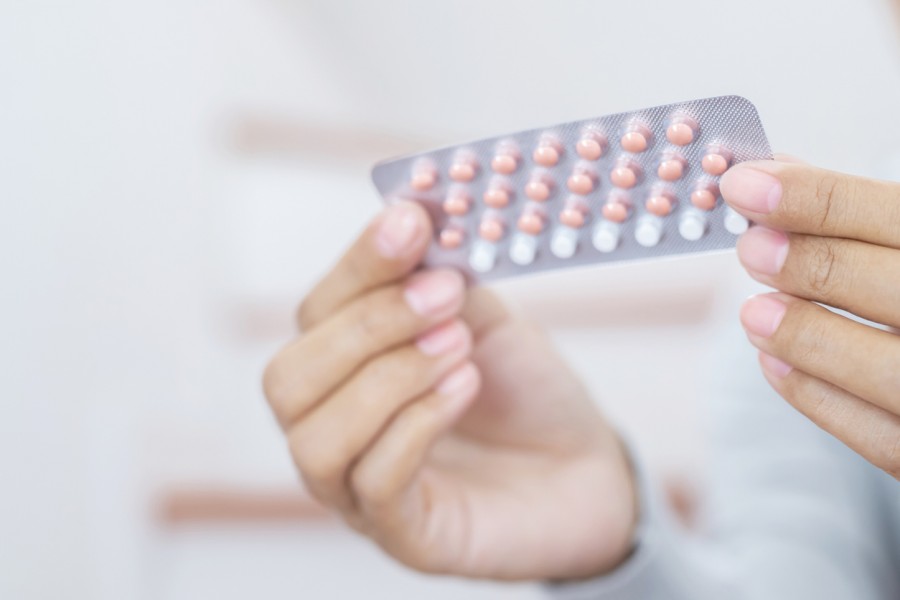What is progesterone?
Progesterone is an important hormone produced in the second half of a woman’s menstrual cycle, in what’s called the Luteal Phase. After an ovarian follicle releases the egg of the month, it takes on the next job – preparing the the uterus lining for pregnancy.
In a natural cycle, progesterone signals the endometrium to change its thickness and secretion so that it becomes receptive to an arriving embryo. It is a precise design by nature that progesterone peaks around implantation time. If an embryo finds home in the uterus, the resulting conception will trigger processes that maintain progesterone during the pregnancy.
If pregnancy does not occur, the progesterone level falls and causes the uterine lining to break down. This results in a period.
Why are progesterone supplements used in an IVF cycle?
During an IVF cycle, medications are used to stimulate the ovaries to produce multiple eggs at the same time for bulk collection. However, these medicines affect a woman’s progesterone level.
Instead of rising after a natural ovulation, ovarian stimulation is followed by a gradual decline in progesterone. This negatively affects endometrial receptivity and makes it less welcoming for an embryo.
Therefore, your fertility specialist may prescribe you progesterone supplements to keep up the progesterone level.
How can you take progesterone?
Progesterone supplementation is usually prescribed to start shortly after egg collection. The supplements can be taken vaginally, orally, intramuscularly or via subcutaneous injections1.
Vaginal suppository
Vaginal progesterone can come in the forms of pessaries (Cyclogest) or gel (Crinone) that you need to apply daily. When progesterone is administered vaginally, it can be directly transported into the uterus. Thus, they are the more common forms of supplementation. A recent randomised controlled trial revealed comparable outcomes between pessaries and gel2.
Oral tablets
Since vaginal suppository is not pleasant and affects patient compliance, oral administration is an alternative. However, the bioavailability of oral progesterone is very low and has shown poor efficacy compared to the other options1. Thus, oral tablets are rarely used.
Intramuscular injection
Progesterone can also be delivered in oil with intramuscular injections. Local side effects including pain and swelling may occur, but some patients prefer injections over vaginal delivery. Although intramuscular injection is used less frequently compared to vaginal suppository, they have shown comparable efficacy1.
Subcutaneous injection
The subcutaneous route of administration is a relatively new option but appears promising. It has comparable efficacy to the vaginal and intramuscular routes and few side effects3,4. Thus, it may be a good option for women who prefer to avoid the other routes of administration.
How long should progesterone supplementation go for?
Differences in progesterone supplementation protocols exist around the globe. Once an embryo implantation results in a pregnancy, progesterone should be produced naturally. However, some doctors prefer to continue supplementation until 12 weeks of pregnancy to be safe than sorry.
In recent years, increasing evidence suggests that progesterone supplementation is not necessary after the first positive hCG test in an IVF cycle5. This holds true even for patients with poor ovarian response6.
A recent retrospective study led by Dr. Alex Polyakov investigated 2010 frozen embryo transfers and was recently published on the Journal of Assisted Reproduction Technologies7.
The study concluded that although progesterone level below 5ng/mL associates with worse birth rates, increasing its level to above 10ng/mL does not confer an improvement in pregnancy outcomes.
Therefore, more specialists are coming to an agreement that supplementing progesterone is beneficial to prepare for implantation but keeping it high for extended duration may not be necessary. The ideal progesterone levels may still need to be clarified with further research.
References
- Ciampaglia, W. & Cognigni, G. E. Clinical use of progesterone in infertility and assisted reproduction. Acta Obstet Gynecol Scand 94 Suppl 161, 17-27, doi:10.1111/aogs.12770 (2015).
- Saunders, H. et al. Efficacy, safety and tolerability of progesterone vaginal pessaries versus progesterone vaginal gel for luteal phase support after in vitro fertilisation: a randomised controlled trial. Hum Reprod, doi:10.1093/humrep/dez261 (2020).
- Baker, V. L. et al. A randomized, controlled trial comparing the efficacy and safety of aqueous subcutaneous progesterone with vaginal progesterone for luteal phase support of in vitro fertilization. Hum Reprod 29, 2212-2220, doi:10.1093/humrep/deu194 (2014).
- Doblinger, J., Cometti, B., Trevisan, S. & Griesinger, G. Subcutaneous Progesterone Is Effective and Safe for Luteal Phase Support in IVF: An Individual Patient Data Meta-Analysis of the Phase III Trials. PLoS One 11, e0151388, doi:10.1371/journal.pone.0151388 (2016).
- Liu, X. R., Mu, H. Q., Shi, Q., Xiao, X. Q. & Qi, H. B. The optimal duration of progesterone supplementation in pregnant women after IVF/ICSI: a meta-analysis. Reprod Biol Endocrinol 10, 107, doi:10.1186/1477-7827-10-107 (2012).
- Pan, S. P. et al. Early stop of progesterone supplementation after confirmation of pregnancy in IVF/ICSI fresh embryo transfer cycles of poor responders does not affect pregnancy outcome. PLoS One 13, e0201824, doi:10.1371/journal.pone.0201824 (2018)
- Volovsky, M., Pakes, C., Rozen, G. et al. Do serum progesterone levels on day of embryo transfer influence pregnancy outcomes in artificial frozen-thaw cycles?. J Assist Reprod Genet, doi: 10.1007/s10815-020-01713-w (2020).
